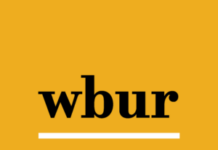
(By Mike McVay) The Super Bowl is always known mostly for the game, but the Halftime Show and the Commercials are often second only to the game as to what’s talked about as a big part of the sporting event. This past weekend’s game was no exception. Great world-class players, in a game with more timeouts than games during the season, and a halftime that’s double the duration of a normal game. So many more breaks … all designed to be filled with commercials and entertainment.
My favorite was the Lay’s commercial featuring Seth Rogan and Paul Rudd. Seth married a ghoul. Scarlett Johansen and husband Colin Jost were in a commercial for Amazon where their Alexa Echo began reading their minds and responding out loud with what they were thinking. General Motors rolled out a new commercial promoting their All-Electric vehicles coming in the future. Entertaining and memorable. That’s what you want from a commercial.
We also saw a commercial titled Land of Loud Flavors which sold Bud Light Seltzer Hard Soda. The commercial was eye catching, attention grabbing, but not memorable for anything specific. Forget that it’s confusing enough to me that Bud Light has a Seltzer Hard Soda. Talk about an oxymoron. I’m sure that they did a lot of research to arrive at the product, and that many taste tests show that it is a special drink that youthful drinkers enjoy and want, and then someone at Budweiser insisted it be labeled with the parent company name. Bud means Budweiser and Budweiser means beer.
There were so many messages from crypto currency companies selling their services that some writers referred to this Super Bowl as The Crypto Bowl. In that regard, this game was somewhat reminiscent of the game in January 2000. The game had commercials from 14 different Dot.Com companies. They paid an average of $2.2m per/message. One can only hope, for the sake of media where we sell commercials, that there won’t be a Crypto Crash as there was a Dot.Com Crash.
Once upon a time, a long time ago, radio stations had copy writers. There were people who worked side-by-side with production directors in writing and producing commercials for their advertisers. Today, many stations require the salesperson to write the commercials purchased by clients, unless it’s a commercial coming from an ad agency.
The elimination of copy writers and commercial producers is another area leading to the list of self-inflicted wounds we heap on our industry. Why would anyone save money when it comes to that area of the station where the entire objective is to make money? Not to mention how poorly written and poorly produced commercials damage the stations ratings and further accelerate audience erosion.
There are those sellers who have exceptional writing skills, but those people would be in the minority, as their most desired skill set is selling advertising. The creative writer’s skill set is selling products, goods, services, and experiences. That’s our purpose in radio, online, digital on-demand and in podcasts.
There are companies today that enable broadcasters to outsource their copywriting and production to high quality and highly skilled companies. That might be the best investment any company that’s dependent on selling advertising can make.
Entrepreneur Magazine ran an article a few years back, written by Craig Simpson of Simpson Direct, that presented Tips for Writing for Direct Mail. The tips, in my opinion, are easily adaptable to a medium that uses sound to sell products, services and goods. I used his suggestions and adjusted them for audio.
- Get The Prospect into the Promotion; You have to get the listeners attention. What’s the benefit of the listener using, buying, sharing the item that is being advertised? Why does anyone want it? What does it do for the consumer? Sell the benefit of the product and why this one is the best.
- Tell a story that gives people what they want. Storytelling is a great way to communicate. Whether it’s fantasy, fun, a spoof, serious or simply a list of benefits, putting it into a story can move a prospect into that point of imagining the product satisfying a need of theirs.
- Build a memorable picture. A huge advantage of using audio for marketing is that it is so very cost effective. The sound of an elephant trumpeting is less expensive than parading a real elephant through an open parking lot. This is where sound effects, then use of appropriate music and the voice actors can imbed a story in the listener’s mind.
- Every kind of commercial message must include a call to action. A CTA creates a sense of urgency. If people don’t react quickly, they may not react at all. It’s difficult to make a CTA memorable long-term. How often have you watched a cute commercial on TV and couldn’t remember the product that it was for? In audio, that means we have to be clear in what the benefit is to the consumer, and the CTA should connect to that benefit.
- Know what you want to accomplish with your commercial message before you begin writing. What are you selling? What’s going to engage the listener and grab their attention? Speak to satisfying that need, or want, and you’ll hear from those who need what you’re offering.
Jack Trout & Al Ries became famous for their books on both Positioning and in regard to Marketing. Great advertising positions the product with a strong statement. The best positioning statements have three things. They are Credible, Based in a Benefit and Memorable. Apple; iPhone Can Do What? Chipotle; Food with Integrity. Starbucks; the Best Coffee. Coca-Cola; Taste the Feeling. Amazon; One Stop Shopping Online.
Remember this; when your client gets what they want, you’ll get what you want.
Mike McVay is President of McVay Media and can be reached at [email protected]






Umm, there is already a crytpo-crash. It’s actually happening, now…
Also, you know what the best performing ads are? The live reads from Joe Rogan. Zero production, and Zero time limits… Just Joe riffin’ about products, cussing and all. This is what radio doesn’t understand. The old copywriters and old, fat prod guys with their libraries of zips, zaps and bells… it’s all over. Nobody wants that back. Stop living (or dying) in the past. It’s over.
Why is the industry so stuck in 1986? What the client actually wants, is what they’ll actually pay for. That’s it.
As long as radio keeps dreaming about what they lost, they won’t be awake to see what’s available right now….